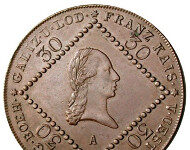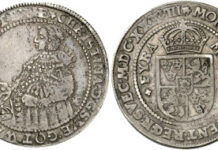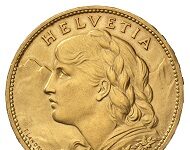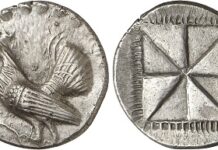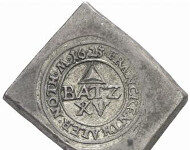The Casa Savoia – A Noble Family between Italy, France, and Switzerland Part 1
Auction house Gadoury will auction off an extensive collection Casa Savoia originating from the possessions of a gentleman of the royal family. In the first article of the three-part series you will learn more about how the counts of Savoy rose from a minor noble family to being protagonists of European politics.
Human Faces Part 22: The boy from Apulia
Why is it that for centuries – or rather thousands of years – the head has served as the motif for the side of a coin? And why has this changed in the last 200? In this episode, Frederick II proves that the sword is not the only way to gain a throne.
The First Gold Coins of the United States
Carolina, Georgia, California – many people were attracted to set out for the unknown by the prospect of an easy yield in the gold fields. That makes the gold rush one of the foundation myths of the United States of America. In the Berlin auction Künker offers a range of numismatic testimonies to this eventful era.
The Coin that was meant to be paper money: The “Wiener Stadtbancozettel Teilungsmünze”
There is a special coin among the lots offered at the Auction 42 of the Münzen & Medaillen GmbH: It’s a so called Wiener Stadtbancozettel Teilungsmünze, coined in 1807. The name sounds quite strange: What does it mean?
The Thirty Years’ War – Part 16 (1636-1640)
Religion was of secondary importance in the Thirty Years’ War. It was all about power and money. Ursula Kampmann brings that era alive. The war performs another volte-face: now, it is the Protestants’ move.
Human faces, part 47: The frivolous Vreneli
Why was the human head the motif on coins for centuries, no, for millennia? Discussions about the precise nature of these heads could be highly entertaining as the example of the Swiss Vreneli demonstrates.
Sicilian Mosaic Part 7: The coinage of Himera and Acragas
Do you know the coins from Himera with the crab of Acragas on the reverse? More about the coinage of these two cities and the historical background of this particular reverse motif can be found here.
Wolrab’s medal on the military relief of Vienna
In 1683, Johann Jacob Wolrab created one of the most beautiful medals showing the relief of Vienna, which marked the end of the second Ottoman siege. Incredibly rich in details, this strike depicts the dramatic battle at Kahlenberg Mountain.
Human Faces Part 23: Beginnings of the War of Roses or the idle king
Why is it that for centuries – or rather thousands of years – the head has served as the motif for the side of a coin? And why has this changed in the last 200 years? In this episode, we will look at Henry’s VI coin portrait and tell his story.
The Thirty Years’ War – Part 5
Both religion and power were the focal points of the Thirty Years’ War that shook the whole of Europe during the 17th century. Ursula Kampmann brings that era alive. Today you will be introduced to new protagonists of this war, including a Protestant who was in no way inferior to Catholic Ferdinand when it came to fanatism.






